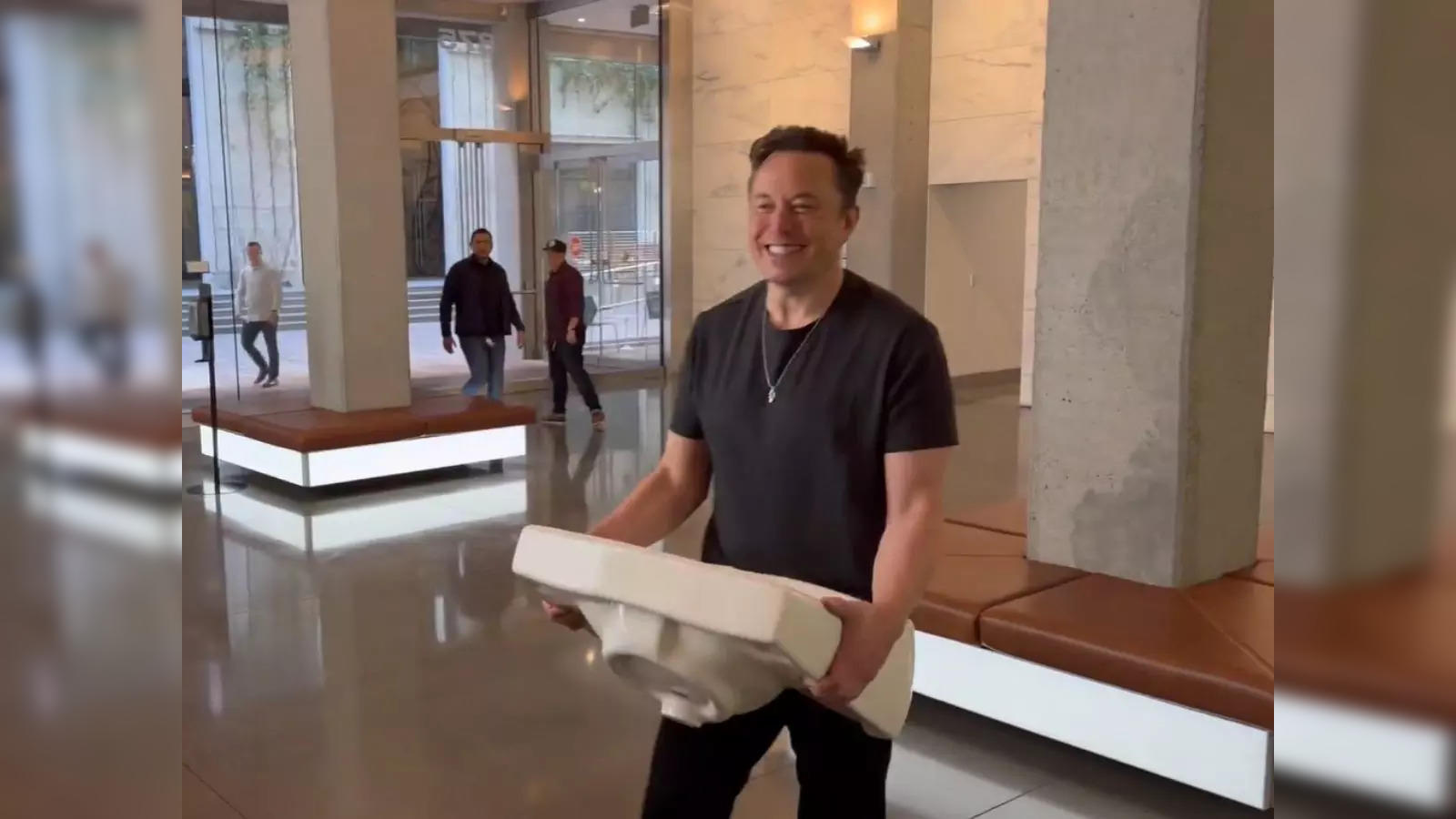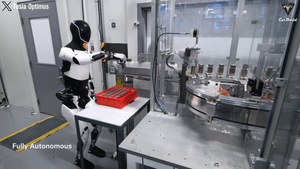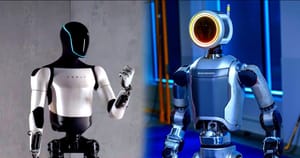When you hear Musk saying, "Tesla is the only company in the real-life AI game," he's not hyperbolizing or making stuff up. They are REALLY spearheading at a speed never seen before by any company and definitely not by a "car" company.
They have the largest fleet deployed and in use, in the world!
The quality and power of data can judge any current AI system to solve a given problem by only one factor: how much data the model has on the problem the model solves. You do the math on that because I am already...

Tesla develops and deploys autonomy at scale in vehicles, robots, and more.

They believe that an approach based on advanced AI for vision and planning, supported by efficient use of inference hardware, is the only way to achieve a general solution for full self-driving, bi-pedal robotics, and beyond. And so far they have been proved VERY right on the matter when comparing the results with WAYMO by Alphabet.
Tesla Bot
Create a general-purpose, bi-pedal, autonomous humanoid robot capable of performing unsafe, repetitive, or boring tasks. Achieving that end goal requires building the software stacks that enable balance, navigation, perception and interaction with the physical world. We’re hiring deep learning, computer vision, motion planning, controls, mechanical and general software engineers to solve some of our hardest engineering challenges.

FSD Chip
Build AI inference chips to run our Full Self-Driving software, considering every small architectural and micro-architectural improvement while squeezing maximum silicon performance-per-watt. Perform floor-planning, timing and power analyses on the design. Write robust tests and scoreboards to verify functionality and performance. Implement drivers to program and communicate with the chip, focusing on performance optimization and redundancy. Finally, validate the silicon chip and bring it to mass production in our vehicles.

Dojo Chip
Build AI training chips to power our Dojo system. Implement bleeding-edge technology from the smallest training nodes to the multi-die training tiles. Design and architect for maximum performance, throughput and bandwidth at every granularity. Dictate physical methodology, floor-planning and other physical aspects of the chip. Develop pre-silicon verification and post-silicon validation methods to ensure functional correctness. Write compilers and drivers to optimize power and performance for our neural networks throughout the entire Dojo system. For more information about Dojo’s arithmetic formats and methods, download our latest whitepaper.

Dojo System
Design and build the Dojo system, from the silicon firmware interfaces to the high-level software APIs meant to control it. Solve hard problems with state-of-the-art technology for high-power delivery and cooling, and write control loops and monitoring software that scales. Work with every aspect of system design where the limit is only your imagination, employing the full prowess of our mechanical, thermal and electrical engineering teams to create the next-generation of machine learning compute for use in Tesla datacenters. Collaborate with Tesla fleet learning to deploy training workloads using our massive datasets, and design a public facing API that will bring Dojo to the masses.

Neural Networks
Apply cutting-edge research to train deep neural networks on problems ranging from perception to control. Our per-camera networks analyze raw images to perform semantic segmentation, object detection and monocular depth estimation. Our birds-eye-view networks take video from all cameras to output the road layout, static infrastructure and 3D objects directly in the top-down view. Our networks learn from the most complicated and diverse scenarios in the world, iteratively sourced from our fleet of millions of vehicles in real time. A full build of Autopilot neural networks involves 48 networks that take 70,000 GPU hours to train 🔥. Together, they output 1,000 distinct tensors (predictions) at each timestep.
Autonomy Algorithms
Develop the core algorithms that drive the car by creating a high-fidelity representation of the world and planning trajectories in that space. In order to train the neural networks to predict such representations, algorithmically create accurate and large-scale ground truth data by combining information from the car's sensors across space and time. Use state-of-the-art techniques to build a robust planning and decision-making system that operates in complicated real-world situations under uncertainty. Evaluate your algorithms at the scale of the entire Tesla fleet.

Code Foundations
Throughput, latency, correctness and determinism are the main metrics we optimize our code for. Build the Autopilot software foundations up from the lowest levels of the stack, tightly integrating with our custom hardware. Implement super-reliable bootloaders with support for over-the-air updates and bring up customized Linux kernels. Write fast, memory-efficient low-level code to capture high-frequency, high-volume data from our sensors, and to share it with multiple consumer processes— without impacting central memory access latency or starving critical functional code from CPU cycles. Squeeze and pipeline compute across a variety of hardware processing units, distributed across multiple system-on-chips.

Evaluation Infrastructure
Build open- and closed-loop, hardware-in-the-loop evaluation tools and infrastructure at scale, to accelerate the pace of innovation, track performance improvements and prevent regressions. Leverage anonymized characteristic clips from our fleet and integrate them into large suites of test cases. Write code simulating our real-world environment, producing highly realistic graphics and other sensor data that feed our Autopilot software for live debugging or automated testing.

It's a drag race between all the major players and Tesla which currently is the only company that consistently proven every nayer wrong. The game isn't over but unless you have a fleet running and not killing people in the process, just don't comment about what others are doing... just sayin'...
It's a drag race between all the major players and Tesla, which currently is the only company that consistently proves every nayer wrong.






![From Tesla to BMW, humanoids are on their way [to your] home](/content/images/size/w300/2024/02/top_humanoids.png)